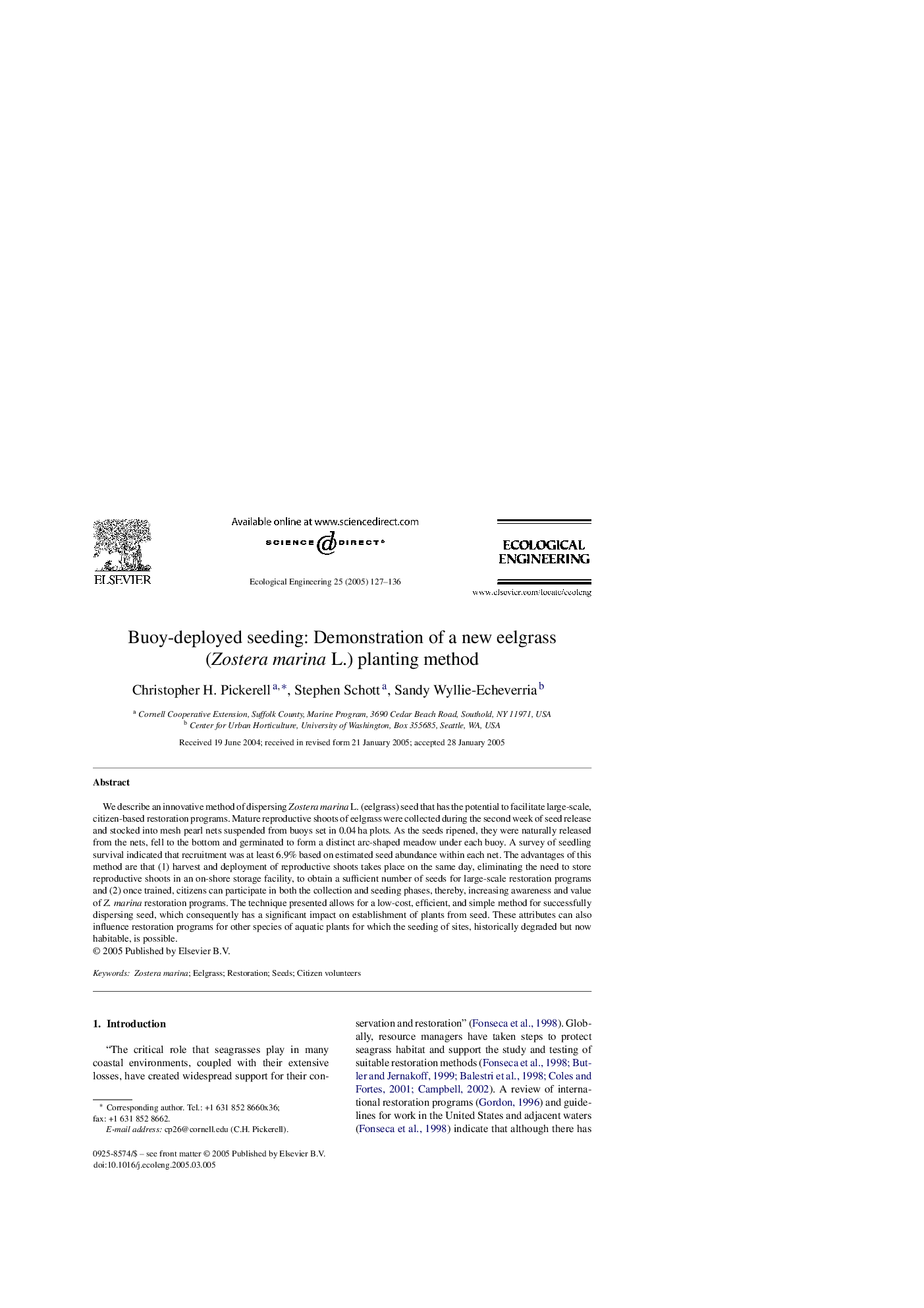| Article ID | Journal | Published Year | Pages | File Type |
|---|---|---|---|---|
| 9447382 | Ecological Engineering | 2005 | 10 Pages |
Abstract
We describe an innovative method of dispersing Zostera marina L. (eelgrass) seed that has the potential to facilitate large-scale, citizen-based restoration programs. Mature reproductive shoots of eelgrass were collected during the second week of seed release and stocked into mesh pearl nets suspended from buoys set in 0.04Â ha plots. As the seeds ripened, they were naturally released from the nets, fell to the bottom and germinated to form a distinct arc-shaped meadow under each buoy. A survey of seedling survival indicated that recruitment was at least 6.9% based on estimated seed abundance within each net. The advantages of this method are that (1) harvest and deployment of reproductive shoots takes place on the same day, eliminating the need to store reproductive shoots in an on-shore storage facility, to obtain a sufficient number of seeds for large-scale restoration programs and (2) once trained, citizens can participate in both the collection and seeding phases, thereby, increasing awareness and value of Z. marina restoration programs. The technique presented allows for a low-cost, efficient, and simple method for successfully dispersing seed, which consequently has a significant impact on establishment of plants from seed. These attributes can also influence restoration programs for other species of aquatic plants for which the seeding of sites, historically degraded but now habitable, is possible.
Related Topics
Life Sciences
Agricultural and Biological Sciences
Ecology, Evolution, Behavior and Systematics
Authors
Christopher H. Pickerell, Stephen Schott, Sandy Wyllie-Echeverria,
